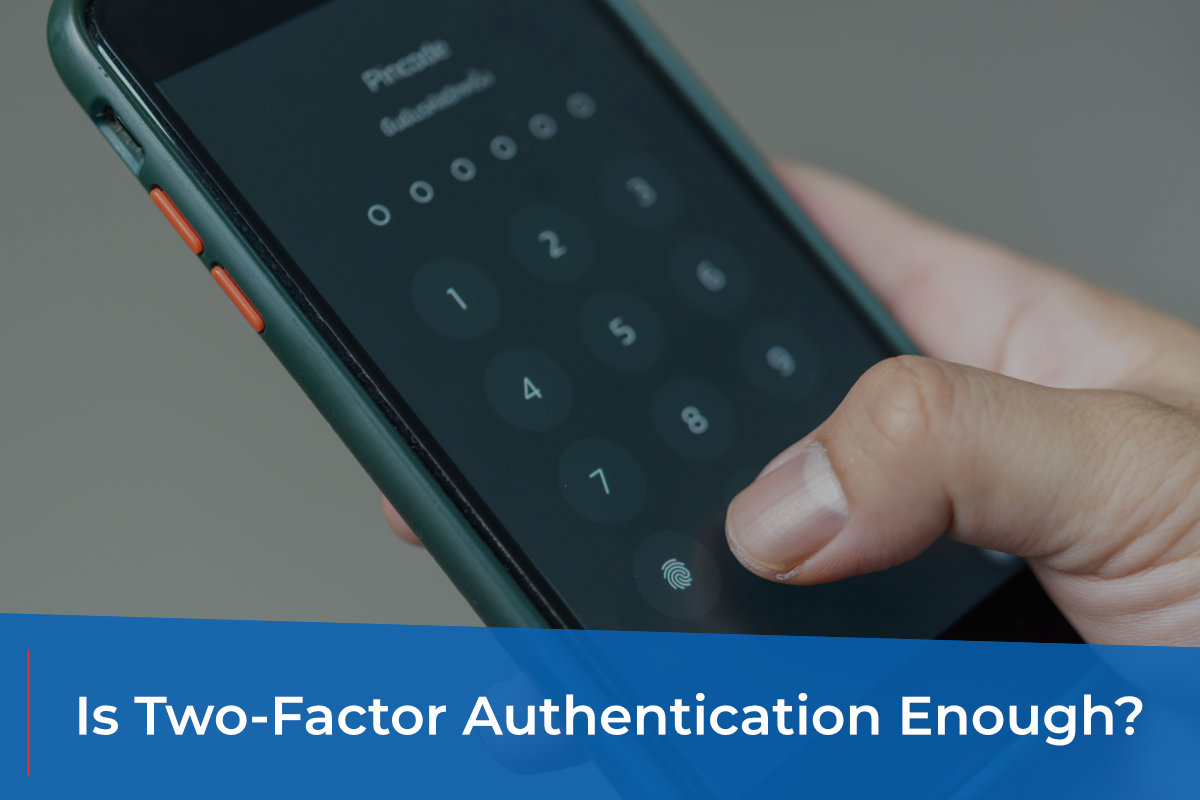In this modern age technology plays a big part in a lot of businesses but, it is really important that you keep this technology protected from malicious cyber threat actors. A very common way for businesses to try and do this is to have two factor authentication in place and a lot of business owners believe it’s enough to protect their data. However, this is not the case. TFA can be circumvented. In this article we are going to look into two factor authentication, what it is and how you can make sure yours is strong and avoid any types of 2FA that can be easily circumvented.
Two-factor authentication: what is it?
A push notification, a security question, or an SMS code delivered to a trusted device are examples of additional authentication steps that are needed in addition to a strong password when using the two-factor authentication technique.
Consumers may sign up for social media accounts like Facebook, set up email accounts, apply for auto loans, schedule appointments through the patient portal of their doctor, and even stream Sunday’s game online. Nowadays, it’s likely that you need a user account and a secure password for anything you do online. Your personal information and online accounts are still under danger even with a complex password. Why? because the prevalence of electronic fraud and hacking is unprecedented. Today, data breaches happen “when,” not “if.”
Complex passwords offer more defence against brute force attacks, but you might not be able to fall asleep at night with just a long string of letters, characters, and digits. Also, if you use the same login information for many accounts, the risks of a breach and illegal access to your online account are increased, not to mention that repairing them may be costly and time-consuming. Cybersecurity experts advise multi-factor authentication, a sort of authentication that needs two or more factors of verification, to address the issue of securing online identities and guarding personal data.
To access online data, two-factor authentication, or 2FA, requires a password (the first factor), followed by a second factor from an authenticator app, such as a biometric like a fingerprint or facial recognition, a push notification, a security question, or a token. The 2FA authentication procedure, also referred to as two-step verification or dual-factor authentication, verifies both sets of user credentials before giving access to an online account.
The majority of 2FA procedures combine two of the five often used variables for authentication: knowledge, possession, inheritance, location, and time. A possession factor is something the user possesses, such as their mobile phone or ID, as opposed to a knowledge factor, which are things the user knows, such as a password or PIN. Inheritance factors, commonly referred to as biometric factors and including fingerprints, voice tonality, and other hereditary identifiers like facial recognition, are a second component that is utilised. You are employing a biometric authentication if you use your fingerprint or facial recognition on your mobile device.
As the name implies, location factors originate from data sources that have verified location-specific information, including IP addresses or GPS software. The last but equally important weapon in the 2FA toolkit is the time factor, which limits access and only allows user authentication during specific times.
From personal experience, consumers are likely to recognise knowledge, possession, and inheritance aspects as the most prevalent 2FA techniques. Despite the fact that 2FA is well-known, internet users still appear to be more concerned with ease of access than password theft. Securing their internet accounts appears to be less important to them than rapidly accessing their email or bank balance.
Is 2FA enough?
Even with an additional verification process, businesses in every industry face the danger of a breach, according to Verizon’s 2019 Data Breach Investigations report. There is someone out there trying to steal your organization’s data, no matter what kind or how much of it there is. Adobe, Anthem, eBay, Equifax, Home Depot, Hilton, Hyatt, JP Morgan Chase, LinkedIn, Marriott International, Sony Pictures, Target, Uber, the US Office of Personnel Management, and Yahoo are just a few of the companies that have had data breaches that broke records. Given that 2019 was the worst year on record for data breaches, it appears that 2FA isn’t always sufficient to safeguard your virtual identity, bank account, or credit score.
2FA reduces the likelihood of online dangers such phishing, account takeover fraud, hacking, and synthetic identity fraud by being a cheap, often simple method. Yet, 2FA is only as strong as its weakest link, just like any other system.
Using the appropriate two factors is important.
Systematic usage of the proper factors can make two-factor authentication susceptible. Processes utilising biometric variables require dependable, secure software, just as methods relying on security tokens are dependent on the manufacturer’s quality. Social engineering attacks can compromise a two-factor authentication system based on knowledge factors, such as a one-time verification code delivered to the user’s mobile device. No security mechanism is fool proof; weak passwords can be cracked just as easily as 2FA SMS codes and messages. When you utilise the proper two factors, such as ID document verification in conjunction with a biometrics verification, you can be sure that your strategy is more layered and secure.
IT Support Toronto the Right Way
By trusting us with your IT needs we can guarantee that your organization is ready to succeed in the modern digital workplace. Our experience in working with small businesses in Ontario and the Greater Toronto area allows us to ensure that you can increase revenue, secure your data, and always operate at peak performance in the most secure way possible. Contact us now to find out what else we can do to improve your IT landscape and bring you even more benefits from your IT going forward.



